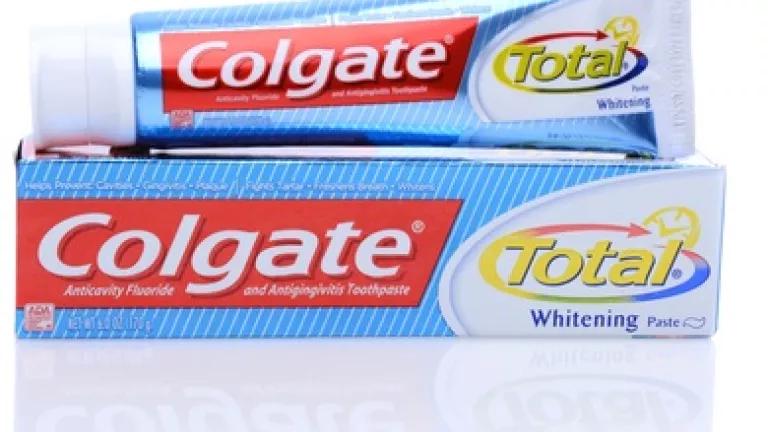
Tom Petty said it best: The waiting is the hardest part.
The story of triclosan in soap and toothpaste has been about a lot of waiting. As I’ve written before, we have had to wait 40 years (plus file a lawsuit) to get the Food and Drug Administration to take action on antibacterial hand soaps containing triclosan. And we still have to wait another two years for a final decision from FDA.
While the story has not been quite as drawn out for toothpaste, we are still waiting.
Colgate Total is the only toothpaste that contains triclosan. It was approved by the FDA in 1997 as safe and effective for treating gingivitis. The problem is that the concerns about triclosan’s impacts on hormones, among other potential adverse health effects, have come to light more recently.
Therefore, we wondered: what did FDA know when it approved Colgate Total? And what does FDA know about triclosan and Colgate Total now? To get answers to these questions, we asked for information from FDA.
We submitted a Freedom of Information Act (FOIA) request for the original application from Colgate, and had to file a lawsuit to get the information from FDA.
Now, to find out what FDA knows now about the product, we requested Colgate's annual reports to FDA about new science and any incidences associated with its product. The FDA told us that it would take up to two years before it could even turn to our request – not to answer it – but just to turn to it.
In the meantime, news continues about exposure to triclosan continues. Check this out from just the past few days.
First, this study was published on Friday, authored by my former colleague Sarah Janssen (endocrinologist extraordinaire), among others.
It’s a study of hospital workers at two different hospitals. One hospital used triclosan-containing soap, the other did not. Not surprisingly, the study shows that people who washed their hands with the triclosan-containing soap had higher levels of triclosan in their urine.
The really interesting part of the study showed that the numbers were skewed heavily by brushing with Colgate Total toothpaste. As it turns out, people who brushed their teeth with Colgate Total had more than five times as much triclosan in their urine as people who didn’t use it.
Second, Bloomberg published this great in-depth article about Colgate Total, the concerns about triclosan, and the information we sought about FDA’s approval of Colgate Total.
Third, CBS News (among many other outlets) reported preliminary results of a study that expectant mothers and their fetuses are widely exposed to triclosan. This is particularly concerning because hormones are critical to proper development in fetuses and young children.
So what to do while we’re waiting for the FDA to act?
The good news is that it is easy to avoid many of these sources of exposure. Read the label on any soap or toothpaste that you buy, and if it lists triclosan in its ingredients, put it down and find another one.
Remember, regular soap and water are just as effective as soap containing triclosan.
And only people who suffer from gingivitis or are at-risk of developing it need to consider using triclosan-containing toothpaste. The vast majority of the population doesn’t fall into that category.
Luckily, the waiting is the hardest part, because avoiding triclosan isn’t hard. You just have to know to look for it.
